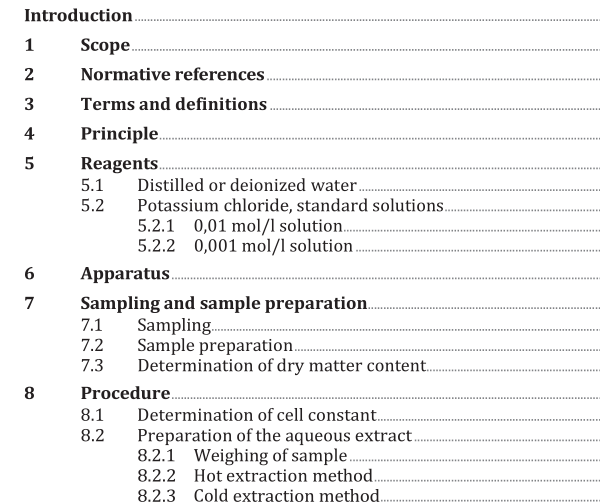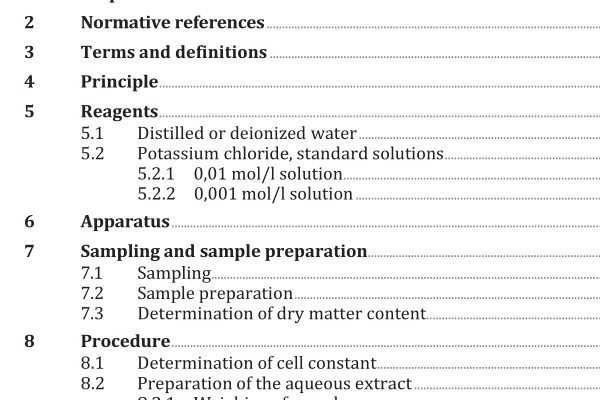ISO 6587:2021 pdf download – Paper, board and pulps — Determination of conductivity of aqueous extracts.
1 Scope This document specifies a method for the determination of the conductivity of aqueous extracts of paper, board or pulp, these extracts having been prepared by a hot or cold method. The method is applicable to all kinds of paper, board and pulps, except for papers used for electrical purposes. For high purity papers used for electrical purposes, see method given in EN 60554-2. 2 Normative references The following documents are referred to in the text in such a way that some or all of their content constitutes requirements of this document. For dated references, only the edition cited applies. For undated references, the latest edition of the referenced document (including any amendments) applies. ISO 186, Paper and board — Sampling to determine average quality ISO 287, Paper and board — Determination of moisture content of a lot — Oven-drying method ISO 638-1, Paper, board, pulps and cellulosic nanomaterials — Determination of dry matter content by oven-drying method — Part 1: Materials in solid form ISO 7213, Pulps — Sampling for testing 3 Terms and definitions For the purposes of this document, the following terms and definitions apply. ISO and IEC maintain terminology databases for use in standardization at the following addresses: — ISO Online browsing platform: available at https://www.iso .org/obp — IEC Electropedia: available at https://www.electropedia .org/ 3.1 conductivity measure of the effect of the presence of dissolved substances in a solution to conduct electricity Note 1 to entry: Conductivity does not measure the same solution properties as either osmolality or osmolarity and does not produce equivalent results. Conductivity only measures those substances that produce ions and does not measure dissolved substances that do not produce ions. [SOURCE: ISO 18369-1:2017, 3.1.6.7] 4 Principle A 2 g sample is extracted for 1 h with 100 ml of boiling or cold, distilled or deionized water. Measurement of the conductivity of the extract at 25 °C by means of a conductivity meter or resistance bridge, using alternating current.
5 Reagents 5.1 Distilled or deionized water Distilled or deionized water shall be used throughout the test. The conductivity of the water shall not exceed 0,2 mS/m after boiling and cooling as specified in 8.2.2 . NOTE Usually, both distillation and deionization are required. Unless great care is exercised when distilling, and with the materials employed in the condenser and subsequent surfaces with which the condensed vapour would possibly come in contact, the distillate can fail to reach the required level of conductivity. When it is not possible to obtain water of the specified purity, water with a higher conductivity may be used, but the conductivity of the water used should be stated in the test report. 5.2 Potassium chloride, standard solutions Use potassium chloride (KCl) of recognized analytical reagent grade, powdered, or fine crystals.
ISO 6587:2021 pdf download – Paper, board and pulps — Determination of conductivity of aqueous extracts






